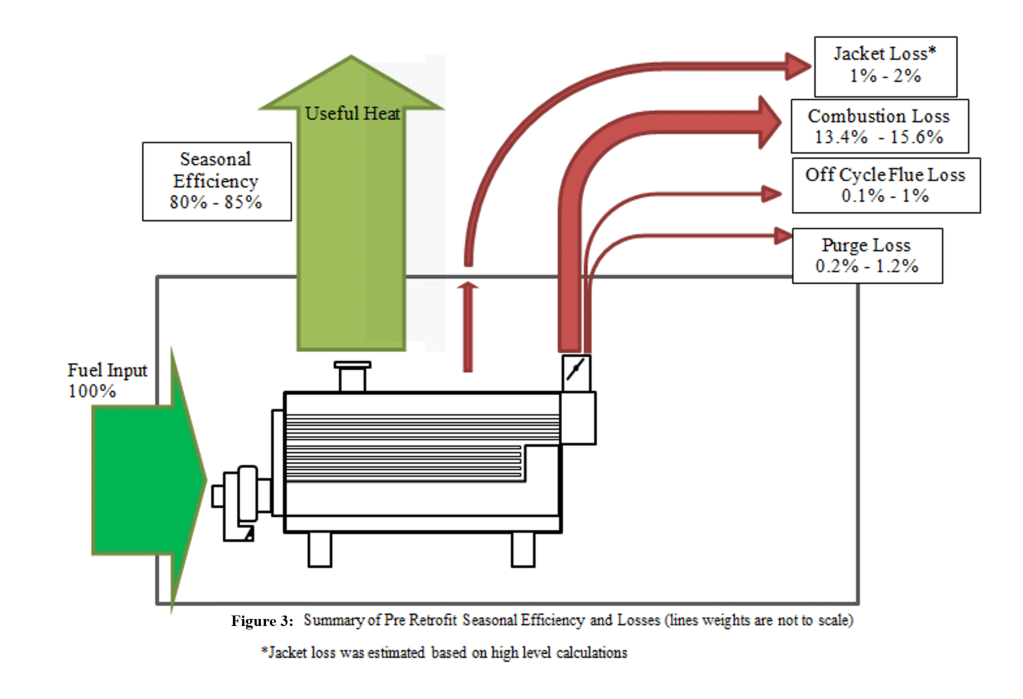- November 07, 2018
- 0 Comments
- In Existing Building Performance
- By Steven Winter Associates
Going Beyond Carburetor Technology in the NYS Market
Fun Fact #1: Space heating and domestic hot water generation represent two of the greatest energy end uses in New York State.
Fun Fact #2: More than 70 percent of all New York City buildings utilize steam for space heating.
Background
The clear majority of the distribution systems in these NYC buildings are supplied by high mass steam boiler plants. Digging down a bit further, it is important to note that the most common air:fuel control for these boilers is a mechanical linkage that connects a single servo motor to both the combustion air damper and the fuel control valve(s). We know that adjusting one part of the linkage’s movement affects fuel and air rates elsewhere in the range, making accurate adjustment difficult. We also know that modern linkageless controls use separate servo motors to operate the fuel control valves, combustion air damper, and (in some cases) the flue damper, allowing for finer control.
In fact, SWA recently completed a demonstration study (partially funded through NYSERDA’s Advanced Building Program) to evaluate linkageless burner retrofits on two buildings with respect to energy savings and carbon reductions, as well as qualitative or non-energy benefits. The retrofit materials were funded by Preferred Utilities Manufacturing Corp. of Danbury, CT, who also provided manufacturer’s technical support. The study also focused on quantifying the seasonal efficiency of intermediate-sized, high mass steam boiler plants, which had not previously been studied. The demonstration addresses this gap in the industry’s knowledge.
Study Findings
For well-tuned high mass steam boilers, the seasonal efficiency was found to be 80% – 85%. Off-cycle heat losses for the pre-retrofit period were 0.3% – 1.3%, which was lower than anticipated. After the burners were retrofitted with linkageless controls, the off-cycle losses were eliminated completely. M&V testing and data showed that the combustion air damper is the primary determinant of off-cycle heat loss, while the flue damper position had little to no effect. This is because the combustion air damper’s small effective leakage area (ELA) makes it the choke point for air flow through the boiler during the off-cycle period. Linkageless burner controls eliminate this off-cycle loss by allowing the combustion air damper to fully close during the off cycle. With traditional linkage burner controls, it is not possible to fully close the combustion air damper during the off cycle; the combustion air damper remains partially open at the low fire position.
The effect of linkageless controls on combustion efficiency was evaluated by comparing the post-retrofit linkageless system against a sample set of well-tuned linkage burners. Combustion efficiency was observed to be slightly higher, with an increase of 1.1% – 1.4% over the entire range of firing rates for linkageless burners versus linkage burners. The following is a summary of recommendations:
- Adding linkageless controls to a new burner at time of replacement has an incremental construction cost of $5,000 – $10,000. For all boilers above 100 Hp, the incremental payback for adding linkageless controls to a new burner is less than five years. SWA recommends linkageless controls on all new multifamily boilers above 100 hp output (4,200 MBH input). Commercial buildings typically have lower operating hours, which will be reflected in the payback.
- Linkageless burner controls enable the installation of VFDs for the burner motors, and VFDs were observed to result in burner electric savings of 66% – 92%. SWA recommends including VFDs as part of the linkageless controls system on all new burner motors above 5 Hp. VFDs also allow for soft start, which extends the useful life of the motors.
- In most cases, retrofitting a burner with linkageless controls before end of useful life (EUL) has an extended payback of seven to nine years. However, there is a lower cost, UL Approved retrofit package new to the market from Preferred Utilities that will reduce the payback to three to five years. In cases where large steam boilers run year-round, such as in buildings with absorption chillers, the economics will be more favorable.
SWA recently met with NYSERDA to present the results and complete the study. The results will be disseminated at various industry events and conferences over the coming months, so stay tuned. For a listing of our upcoming sessions and presentations, visit our events page.
To read the full report, click here.
By Cathal Gleeson, Senior Mechanical Engineer



